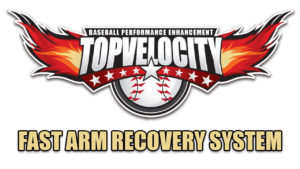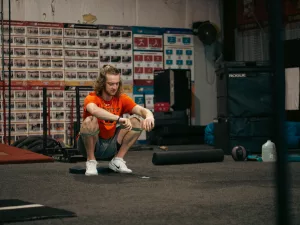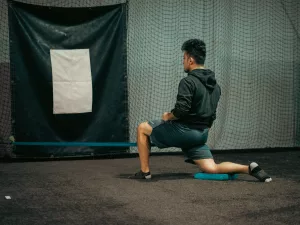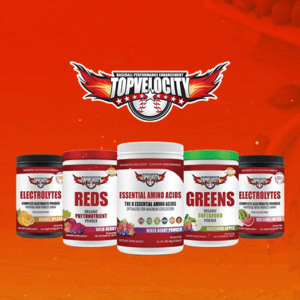 In many games, especially baseball, and softball, pitching is a critical skill, and soreness after pitching is common. In addition to being exciting and gratifying, pitching can be physically taxing and cause soreness, particularly in the arms, shoulders, and back. Performance can be hampered by soreness, which can also cause injuries and lessen one's enjoyment of the activity. Therefore, it's critical to understand how to effectively treat pain and recuperate from pitching. With appropriate warm-up and cool-down exercises, rest, hydration, nutrition, and self-care techniques, this article aims to offer helpful advice and strategies for removing soreness after pitching. This piece will teach you how to take care of your body and maintain peak physical condition, regardless of whether you are a novice or seasoned pitcher.
In many games, especially baseball, and softball, pitching is a critical skill, and soreness after pitching is common. In addition to being exciting and gratifying, pitching can be physically taxing and cause soreness, particularly in the arms, shoulders, and back. Performance can be hampered by soreness, which can also cause injuries and lessen one's enjoyment of the activity. Therefore, it's critical to understand how to effectively treat pain and recuperate from pitching. With appropriate warm-up and cool-down exercises, rest, hydration, nutrition, and self-care techniques, this article aims to offer helpful advice and strategies for removing soreness after pitching. This piece will teach you how to take care of your body and maintain peak physical condition, regardless of whether you are a novice or seasoned pitcher.
All the drills, lifts, exercises, and training plans listed in this article are a part of the Fast Arm Recovery System!
Here is what is covered in this article on soreness after pitching:
 Pitchers can reduce soreness and maintain peak physical condition by warming up and cooling down, doing focused muscle exercises, and using correct throwing mechanics.
Pitchers can reduce soreness and maintain peak physical condition by warming up and cooling down, doing focused muscle exercises, and using correct throwing mechanics.- Pitchers should make an effort to get enough sleep, consume enough water, and eat a balanced diet as these are crucial elements of soreness relief.
- Foods and beverages like processed foods, sugary drinks, and booze that can cause inflammation should be avoided or consumed in moderation by pitchers.
- Pitchers can greatly benefit from self-care practices like stretching, massage, and ice treatment for reducing pain and speeding up recovery.
- Pitchers should concentrate on stretching the shoulders, back, and hips as well as all the other muscles used in throwing, holding each stretch for at least 2 minutes without bouncing.
- For active recovery, pitchers can perform low-intensity cardiovascular exercises, use compression sleeves or socks to reduce inflammation, and apply ice to sore regions.
Preparing and Recovering Properly: Warm-up and Cool-down Exercises
 Pitchers must properly prepare and recuperate in order to lower their risk of injury and ease soreness after pitches. Warm-up activities are crucial to increase blood flow, loosen the muscles, and get the body ready for the physical demands of pitching. Pitchers should begin with simple cardiovascular activities to increase their pulse rate and body temperature, such as jogging or jumping. The next exercise should be dynamic stretching, which entails slow, controlled motions that resemble the actions of throwing. Examples of these motions include arm circles, lunges, and squats. Dynamic stretching can increase the range of motion, flexibility, and muscle activation, all of which can help to throw require less stress on the muscles and joints.
Pitchers must properly prepare and recuperate in order to lower their risk of injury and ease soreness after pitches. Warm-up activities are crucial to increase blood flow, loosen the muscles, and get the body ready for the physical demands of pitching. Pitchers should begin with simple cardiovascular activities to increase their pulse rate and body temperature, such as jogging or jumping. The next exercise should be dynamic stretching, which entails slow, controlled motions that resemble the actions of throwing. Examples of these motions include arm circles, lunges, and squats. Dynamic stretching can increase the range of motion, flexibility, and muscle activation, all of which can help to throw require less stress on the muscles and joints.
Exercises to promote recovery and avoid soreness should be done after pitching. Starting with easy cardio exercises like biking or walking will help pitchers progressively lower their heart rates and body temperatures. Moving on to static stretching, which entails maintaining a stretch for 2 minutes without bouncing, is the next step for them. Static stretching can help ease tension in the muscles, increase flexibility, and stop muscular imbalances from occurring, which can result in pain and injury.
Pitchers should include exercises that target the particular muscles used in pitching, such as the shoulders, back, and core, in addition to warm-up and cool-down routines. Strength and stamina can be increased through resistance training, such as lifting weights and anaerobic conditioning, which can lessen fatigue and soreness while pitching. To maximize efficiency and reduce strain on their muscles and joints, pitchers should also pay close attention to the mechanics of their throwing motion, including their lower half, hip to shoulder separation, and follow-through.
Overall, pitchers can reduce soreness and remain in top condition for their next pitching session by warming up and cooling down, doing targeted muscle exercises, and using correct throwing mechanics. The 3X and 2X Programs at TopVelocity have all the training plans to follow as needed.
This video is a part of the Fast Arm Recovery System!
Rest, Hydration, and Nutrition: The Essentials for Soreness After Pitching
 Rest, hydration, and nutrition are essential components of soreness relief for pitchers. Rest allows the body to recover and repair from the physical demands of pitching, which can reduce soreness and prevent injury. Pitchers should aim to get at least 7 to 9 hours of sleep each night, and they should also take rest days to allow their muscles to recover fully.
Rest, hydration, and nutrition are essential components of soreness relief for pitchers. Rest allows the body to recover and repair from the physical demands of pitching, which can reduce soreness and prevent injury. Pitchers should aim to get at least 7 to 9 hours of sleep each night, and they should also take rest days to allow their muscles to recover fully.
Hydration is also critical for soreness relief, as it helps to transport nutrients to the muscles and remove waste products. Pitchers should aim to drink at least 8 to 10 glasses of water per day, and they should also drink fluids before, during, and after pitching to maintain hydration levels.
In addition to hydration, proper nutrition is essential for soreness relief. Pitchers should aim to eat a balanced diet that includes a variety of foods, such as lean proteins, whole grains, fruits, and vegetables. Proteins are particularly important for muscle recovery and repair, so pitchers should aim to consume protein-rich foods such as chicken, fish, eggs, and beans. Pitchers should also consume carbohydrates, which provide the body with energy, and healthy fats, which help to reduce inflammation. It is also recommend that you supplement with more protein. To learn the ultimate recovery supplementation system checkout the TopVelocity Nutrition Program.
Lastly, pitchers should avoid or limit their consumption of foods and drinks that can increase inflammation, such as processed foods, sugary drinks, and alcohol. These foods and drinks can exacerbate soreness and delay recovery.
In summary, rest, hydration, and nutrition are crucial for soreness relief for pitchers. By taking the time to rest and recover, staying hydrated, and eating a balanced diet, pitchers can reduce soreness and stay in top shape for their next pitching session.
This video is a part of the Fast Arm Recovery System!
Self-Care Techniques: Stretching, Massage, and Ice Therapy for Pitching Recovery
 Self-care techniques such as stretching, massage, and ice therapy can be highly effective in alleviating soreness and promoting recovery for pitchers. Stretching can help increase flexibility and range of motion, which can reduce the risk of injury and relieve soreness. Pitchers should focus on stretching the muscles used in pitching, such as the shoulders, back, and hips. They should also hold stretches for at least 2 minutes without bouncing, as bouncing can cause injury.
Self-care techniques such as stretching, massage, and ice therapy can be highly effective in alleviating soreness and promoting recovery for pitchers. Stretching can help increase flexibility and range of motion, which can reduce the risk of injury and relieve soreness. Pitchers should focus on stretching the muscles used in pitching, such as the shoulders, back, and hips. They should also hold stretches for at least 2 minutes without bouncing, as bouncing can cause injury.
Massage can also be highly beneficial for soreness relief. Massage helps to increase blood flow and reduce muscle tension, which can alleviate soreness and promote recovery. Pitchers can use a foam roller or massage ball to massage the muscles used in pitching, such as the shoulders, back, and legs. They can also seek professional massage therapy to receive more targeted and comprehensive treatment.
Ice therapy, or the application of ice to sore or inflamed areas, can also be highly effective in reducing soreness and promoting recovery. Pitchers can use ice packs or cold compresses to apply ice to sore areas for 10 to 15 minutes at a time. Ice therapy can help reduce inflammation, numb pain, and promote healing.
In addition to stretching, massage, and ice therapy, pitchers can also use other self-care techniques such as massage guns, compression therapy, and active recovery exercises. Massage guns can help increase blood flow and promote healing. Compression therapy, such as wearing compression sleeves or socks, can help reduce inflammation and improve circulation. Active recovery exercises, such as low-intensity cardiovascular exercises, can help promote blood flow and reduce muscle soreness.
In summary, self-care techniques such as stretching, massage, and ice therapy can be highly effective in alleviating soreness and promoting recovery for pitchers. By incorporating these techniques into their pitching recovery routine, pitchers can reduce soreness, prevent injury, and stay in top shape for their next pitching session.
This video is a part of the Fast Arm Recovery System!
TopVelocity Supplements to Relieve Soreness After Pitching
 Consider taking TopVelocity supplements if you're a pitcher hoping to improve your recovery and lessen soreness after pitching. Eight important amino acids, green and red micronutrients, and other ingredients found in TopVelocity supplements can support muscle recovery and lessen inflammation.
Consider taking TopVelocity supplements if you're a pitcher hoping to improve your recovery and lessen soreness after pitching. Eight important amino acids, green and red micronutrients, and other ingredients found in TopVelocity supplements can support muscle recovery and lessen inflammation.
TopVelocity supplements can help you give your body the nutrients it requires to recover quickly and operate at your peak performance. These supplements are made with premium, natural ingredients to ensure maximum efficacy and are specially created for athletes.
Incorporate TopVelocity supplements into your routine now if you're ready to improve your pitching ability and lessen soreness. Place an online order to begin enjoying the advantages of improved recovery for your upcoming event.
Checkout the TopVelocity Patreon for this exclusive content, remote coaching, and weekly video analysis!


 Pitchers can reduce soreness and maintain peak physical condition by warming up and cooling down, doing focused muscle exercises, and using correct throwing mechanics.
Pitchers can reduce soreness and maintain peak physical condition by warming up and cooling down, doing focused muscle exercises, and using correct throwing mechanics.

